Back in the ’90s, if you wanted to feel like a street-fighting vigilante, an intergalactic cyborg, or a sewer-dwelling turtle with a bad attitude, the Sega Genesis was your go-to console. With its gritty sound chip, punchy visuals, and arcade-like speed, the Genesis didn’t just play beat ’em ups—it lived them.
This was the golden era of couch co-op, where two players could throw down side by side, hammering buttons, yelling over background music, and sharing the satisfaction of taking down a pixelated boss together. Genesis embraced the genre with open arms, delivering everything from big-name licenses and arcade ports to oddball cult classics.
Whether you were clearing crime-ridden streets, waging war on alien scum, or unleashing superhero justice, the Sega Genesis turned every living room into a battlefield—and we’re about to revisit the 20 games that made it legendary.
Streets of Rage
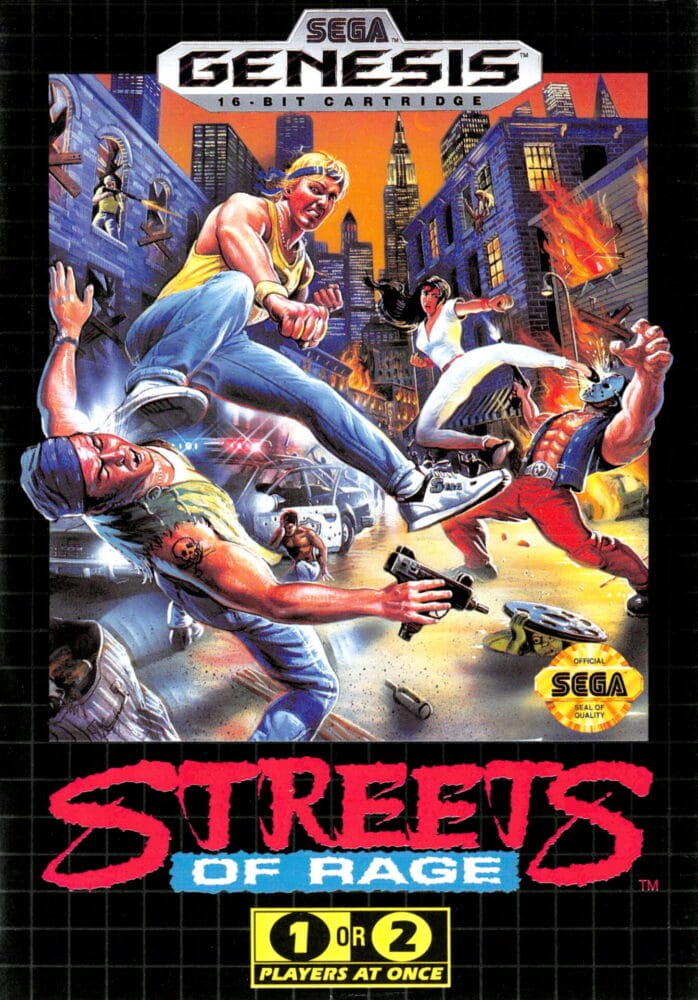
- Developer: Sega
- Release Year: 1991
The original Streets of Rage was Sega’s direct, no-holds-barred answer to the brawler dominance of Final Fight, and boy, did it make a statement. You picked one of three heroes—Axel, Blaze, or Adam—and set out to reclaim your city from the clutches of the sinister Mr. X. The gameplay was gloriously straightforward: move to the right and pummel every punk that got in your way. But it was the little things that cemented its status. The gritty, neon-drenched urban environments felt alive and dangerous. And that soundtrack? Yuzo Koshiro’s iconic, bass-driven synth tracks absolutely slapped, providing the perfect rhythmic backdrop for the on-screen chaos.
Why It’s Worth Playing: Streets of Rage is a raw, atmospheric time capsule of early ‘90s Sega coolness. The pacing is sharp, the two-player co-op is a blast, and it still feels satisfying to toss enemies across the screen today. It’s a masterclass in setting a mood and establishing a franchise identity that would go on to become iconic. You simply can't call yourself a beat 'em up aficionado without having thrown down in this classic.
Streets of Rage II
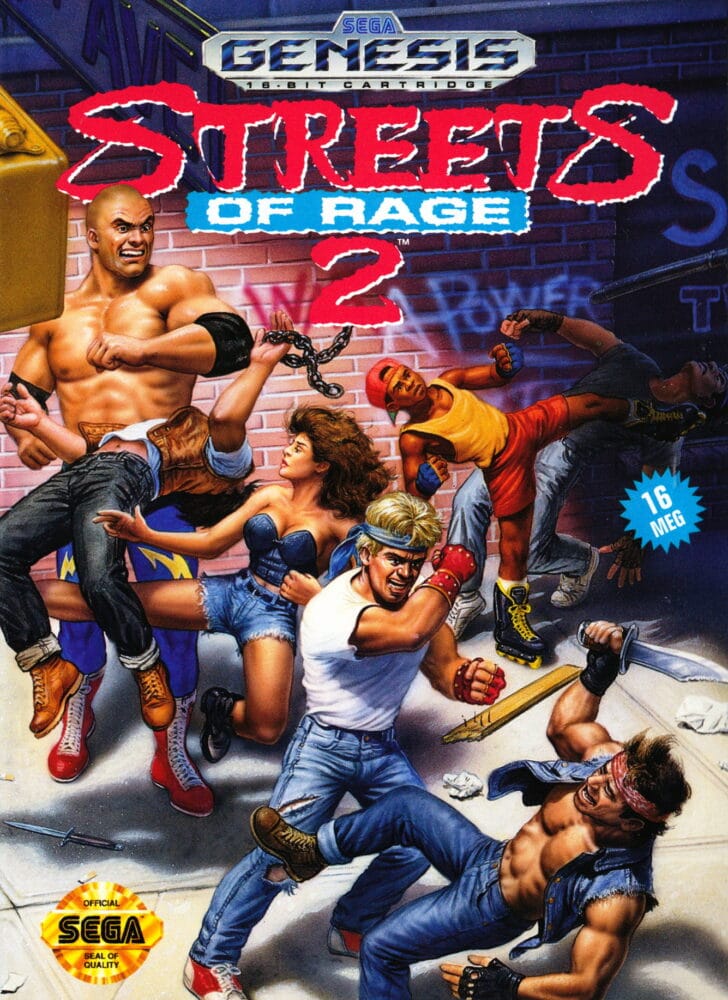
- Developer: Sega
- Release Year: 1993
Streets of Rage II dialed it up to eleven, utterly annihilating its predecessor. The sprites were larger, more detailed, and animated with a fluidity that bordered on sorcery for the time. The controls? Impeccably tight and responsive, transforming the combat from a simple brawl into a brutal ballet. Gone were the limited special moves that cost health. In their place, a brilliant new system allowed for screen-clearing blitz attacks without the punishing trade-off, encouraging you to actually use your coolest techniques. The new character roster was a revelation. Who could resist the lightning-fast rollerblading attacks of Skate or the terrifying grappling power of Max Thunder?
Why It’s Worth Playing: Is this even a question? Streets of Rage II isn’t just the best beat ‘em up on the Genesis; it’s a strong contender for one of the greatest video games of all time, full stop. It's near-perfect fusion of style, substance, and sonic brilliance creates an experience that has yet to be surpassed, even decades later. It’s not just worth playing—it’s essential. This is the absolute pinnacle of the genre.
Streets of Rage III
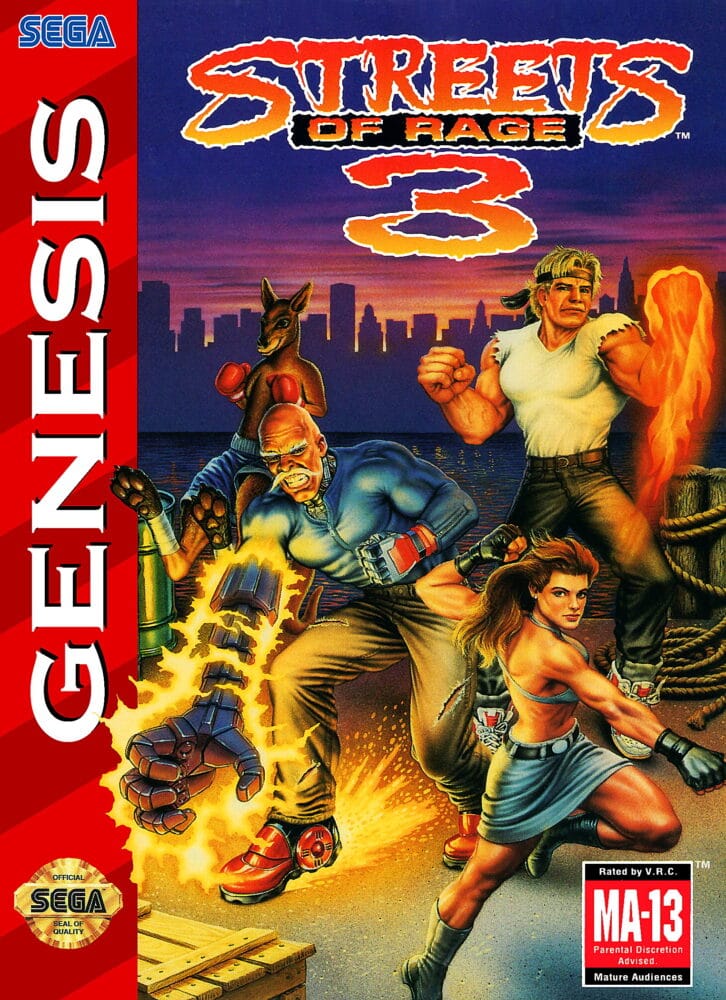
- Developer: Sega
- Release Year: 1994
Ah, Streets of Rage III. The black sheep, the controversial chapter, the sequel that dared to be different and got a lot of flak for it. Following up on what many consider a perfect game is a thankless task, and this entry took some wild swings. The game introduced new mechanics like running, combo strings, and branching paths that offered some replayability. It also gave us a slightly altered roster, replacing Adam with the cybernetically enhanced Dr. Zan. And let’s not forget the now-infamous regional differences; the Japanese version, Bare Knuckle III, featured a completely different (and some argue, more coherent) storyline and a less punishing difficulty curve.
Why It’s Worth Playing: Despite its divisive nature, Streets of Rage III is absolutely worth experiencing. It’s a fascinating glimpse into what could have been the future of the series. The expanded move sets and faster pace offer a deeper, more technical combat system for those willing to master its intricacies. It’s the most complex entry in the trilogy, and conquering its challenges provides a unique kind of satisfaction. Just maybe have a Game Genie handy for that North American version, yeah?
Teenage Mutant Ninja Turtles: The Hyperstone Heist
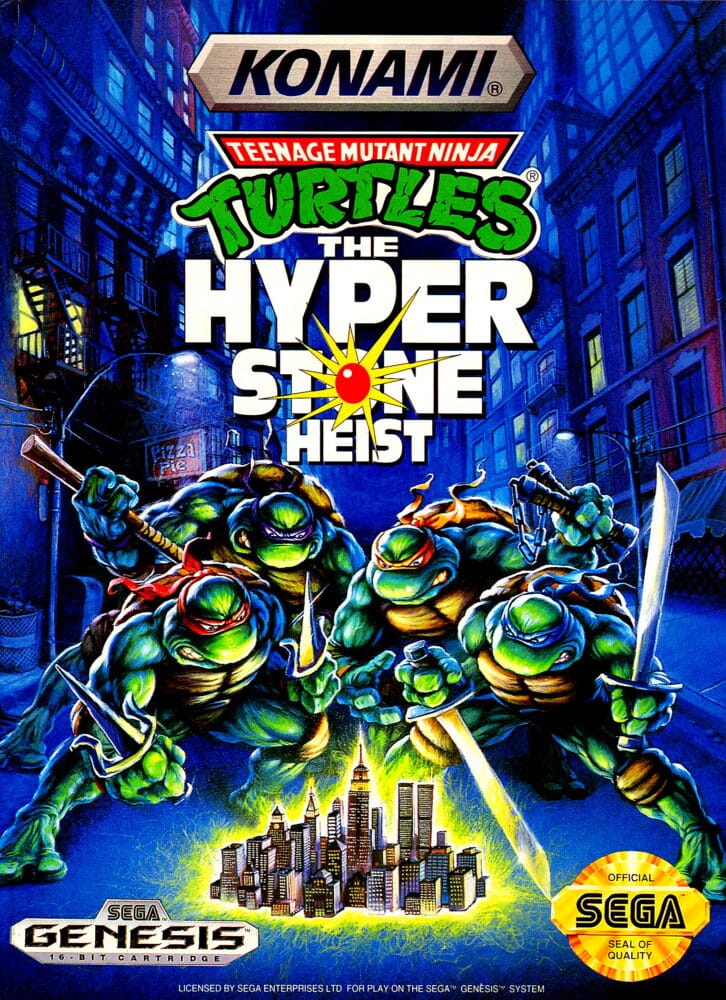
- Developer: Konami
- Release Year: 1992
While the SNES had the legendary Turtles in Time, Genesis owners got Teenage Mutant Ninja Turtles: The Hyperstone Heist, Konami’s brilliant and often overlooked answer to the 16-bit brawler question. This is a wholly unique adventure that takes the core gameplay of its SNES cousin and injects it with a serious shot of adrenaline. You still get to choose from all four turtles, each with their distinct weapon and feel, to battle through stages that mash up elements from the cartoon and the arcade hit. The levels are condensed and remixed, creating a tighter, more focused experience that rarely lets up. The plot is pure Saturday morning cartoon goodness, and the gameplay matches it perfectly.
Why It’s Worth Playing: The Hyperstone Heist is the definitive TMNT brawler experience on the Sega Genesis, full stop. It’s a masterclass in adapting a beloved property into a video game that just feels right. The faster pace gives it an identity all its own, and the core gameplay is rock-solid. If you’ve ever shouted “Cowabunga!” at a screen, you owe it to yourself to track this one down. It’s a top-tier shell of a time.
Spider-Man & Venom: Maximum Carnage
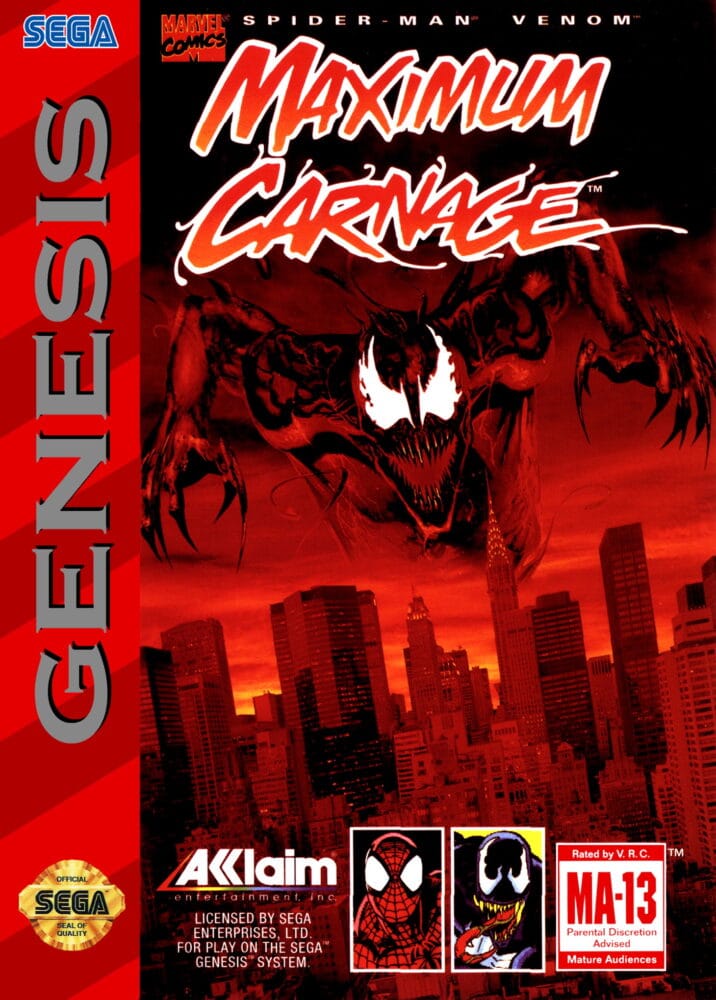
- Developer: Software Creations
- Release Year: 1992
Released on a blazing red cartridge, Maximum Carnage was a full-blown phenomenon. You alternate between Spider-Man and Venom, pounding your way through Manhattan’s streets to stop Carnage’s psychotic family from painting the town red. The gameplay is solid, if a bit straightforward, but the real star here is the presentation. It’s a faithful adaptation that feels like you’re controlling a comic book, complete with panels, word balloons, and cameos from a ton of Marvel heroes like Captain America and Iron Fist. The soundtrack is a banger, too, featuring a grunge-inspired score that absolutely screams 1994.
Why It’s Worth Playing: Maximum Carnage is a landmark of licensed gaming, perfectly encapsulating the attitude of its source material and its era. The tone is darker, the action relentless, and the Marvel fan service is top-tier. Plus, it feels great to tag enemies with Spidey’s webs or Venom’s brute strength. For anyone who lived through the 90s comics boom or just loves a solid superhero punch-up, this is an essential play.
Venom/Spider-Man: Separation Anxiety
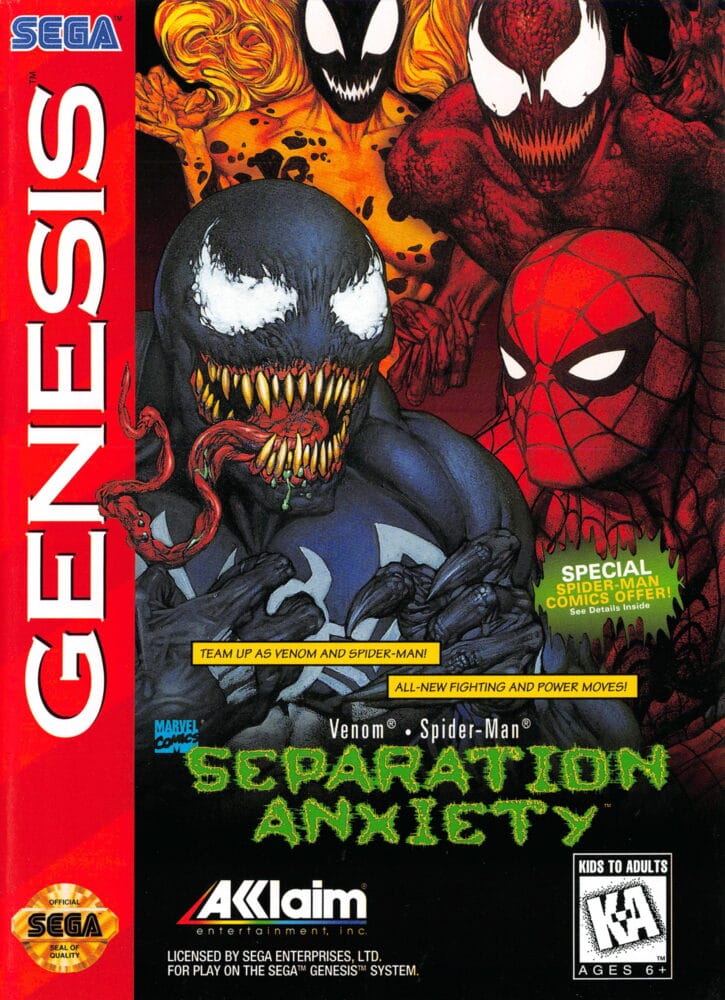
- Developer: Software Creations
- Release Year: 1995
A sequel that built on Maximum Carnage’s foundation, Separation Anxiety took the foundation of its predecessor and decided more was more. The biggest and most welcome addition here is the full two-player co-op from the start, allowing one player to web-sling as Spider-Man while the other tears through enemies as Venom. You get a wider array of moves and the ability to call in assists from other Marvel heroes, which adds a nice bit of strategic variety to the brawling. The levels are longer, and the enemy variety is improved, making the whole experience feel a bit meatier.
Why It’s Worth Playing: If you loved Maximum Carnage but wished it was a bit more polished and a lot more social, this is your game. The two-player co-op is a game-changer, making the chaotic symbiote-smashing action a shared experience. While it may be less iconic, it's a longer, more feature-complete package that perfects the formula Software Creations started. It’s the ultimate buddy-play version of a Spider-Man brawler on the Genesis.
The Death and Return of Superman
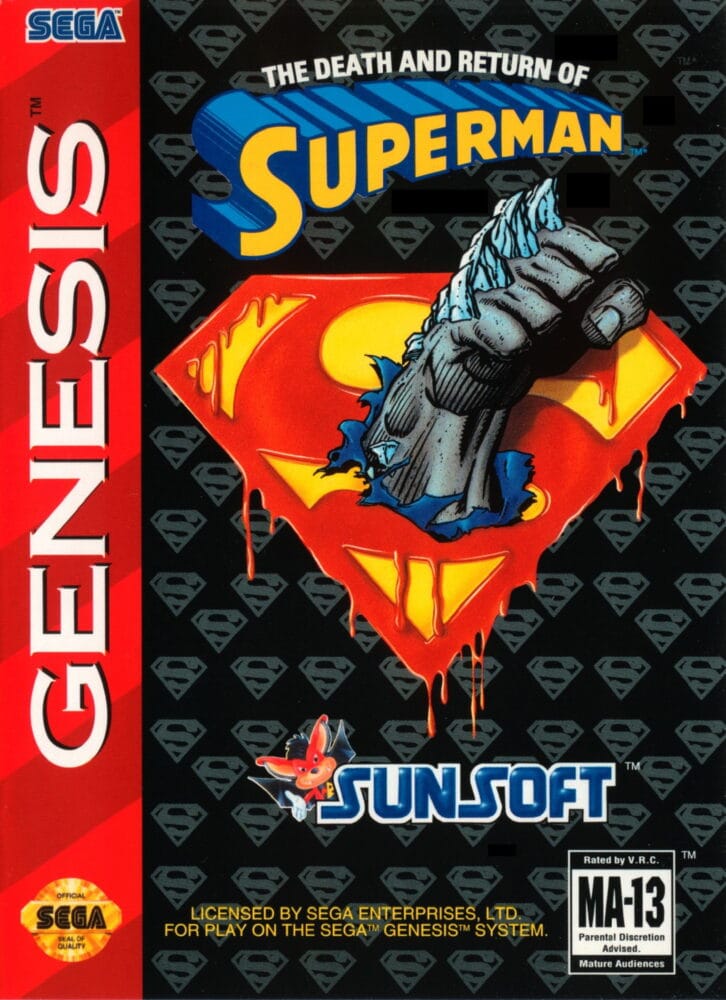
- Developer: Blizzard Entertainment
- Release Year: 1995
Yes, you read that right—Blizzard Entertainment, the same folks who would later go on to define entire PC gaming genres, took a crack at the Man of Steel with The Death and Return of Superman. You don’t just play as Superman; you eventually take control of the four replacements who show up after Doomsday, well, does his thing: the Eradicator, Superboy, Steel, and the Cyborg Superman. Each character feels distinct, with their own move sets and abilities, which is a fantastic idea that keeps the gameplay from getting too stale. It’s packed with comic-authentic detail and a cinematic feel uncommon for the time.
Why It’s Worth Playing: For Superman fans, this is a fascinating and deeply faithful adaptation of a classic comic arc. Getting to play as the different Supermen offers a cool variety of playstyles you won’t find in other games. It’s not the most refined brawler on the system, but its ambition and dedication for the source material makes it one of the better DC brawlers ever made. With great sprite work, solid combat variety, and a rare chance to punch Doomsday in the face, what’s not to love?
The Tick

- Developer: Software Creations
- Release Year: 1995
Based on the utterly absurd and beloved cartoon, The Tick fully embraces its source material’s glorious nonsense. You don’t just punch villains; you battle a literal bread monster, a world-conquering chair, and an army of unsavory clowns. It’s as wonderfully stupid as it sounds, and I mean that in the best way possible. The gameplay itself is competent and colorful, with The Tick and Arthur offering slightly different play styles. It’s not going to win any awards for complexity, but it’s solid, fun, and, most importantly, funny. The two-player co-op is where the chaos truly shines, as you and a friend can spam “SPOON!” to your heart’s content.
Why It’s Worth Playing: The Tick is one of the most faithful and fun licensed games on the Genesis. It’s a hilarious romp that’s perfect for a lazy afternoon of co-op mayhem. If you’re a fan of the cartoon or just love games that don’t take themselves too seriously, this hidden gem is an absolute must-play.
Battletoads
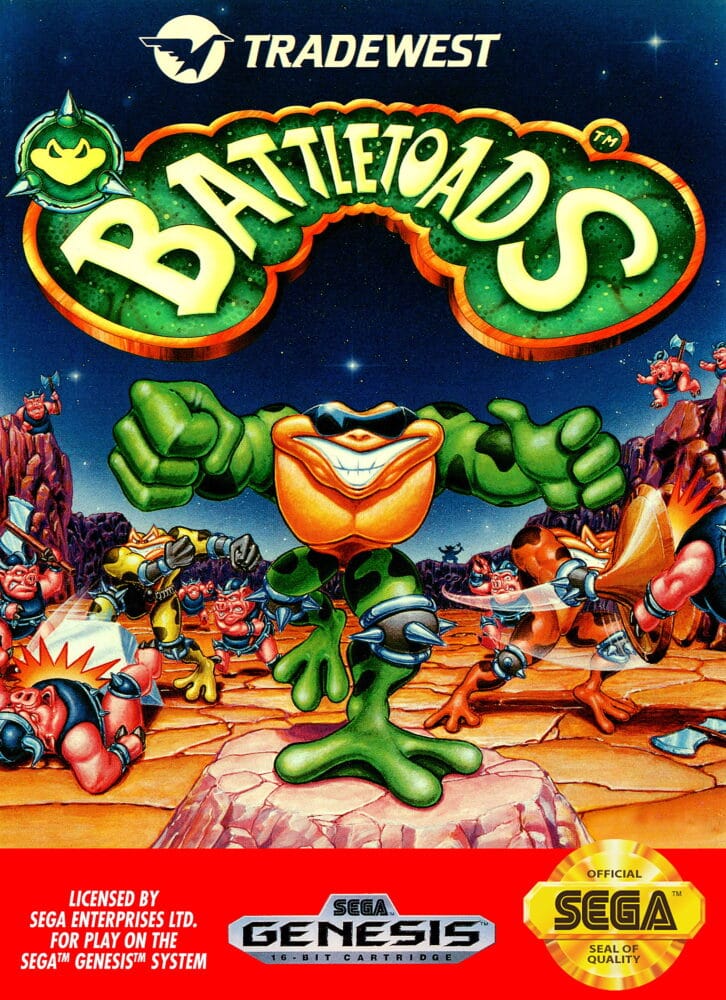
- Developer: Rare
- Release Year: 1993
Let’s not mince words here: the Genesis port of Battletoads is an absolute triumph. While the NES original is legendary for its punishing difficulty, this 16-bit version takes the core chaos and amplifies it with bigger, more detailed sprites, a smoother frame rate, and some of the most grotesquely fantastic animation on the system. The ‘Toads don’t just punch; they morph their limbs into giant hammers, boot enemies with comically oversized feet, and generally pummel foes with a satisfyingly cartoonish violence that never gets old. The difficulty is infamous for a reason—this is not a game for the faint of heart. But overcoming its challenges provides a level of satisfaction that few other games can match.
Why It’s Worth Playing: Battletoads is the definitive version of a stone-cold classic. It showcases Rare at the peak of its creative and technical powers on consoles. The sheer variety of gameplay, combined with its outrageous sense of humor and stellar presentation, makes it a must-play for brawler veterans who love to suffer (with style).
Battletoads & Double Dragon: The Ultimate Team
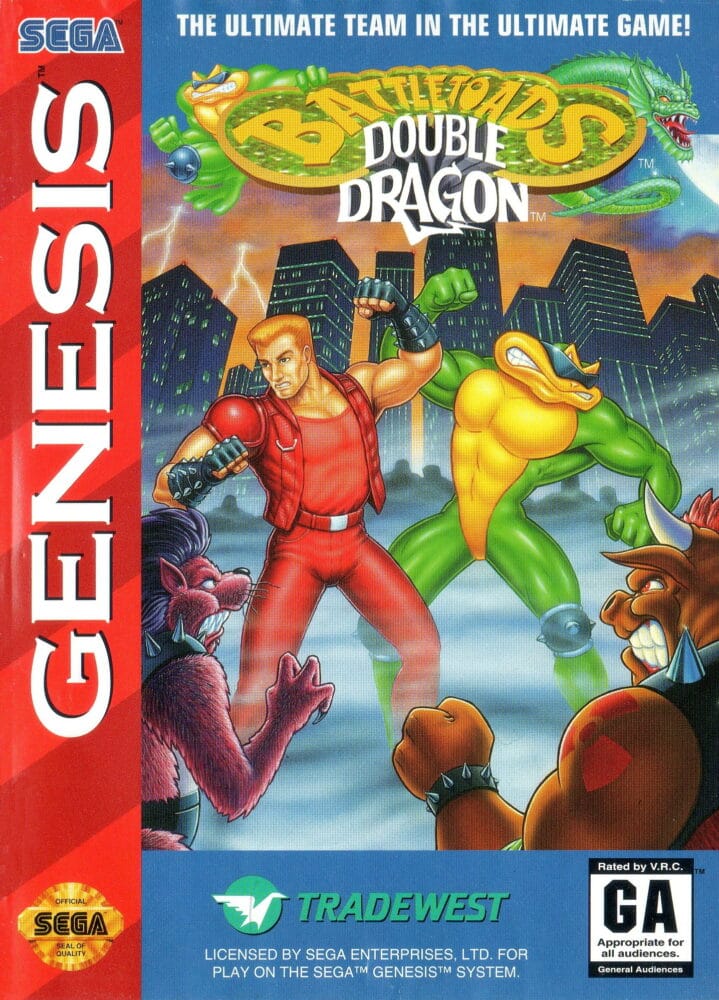
- Developer: Rare
- Release Year: 1993
What happens when you smash two of the most iconic beat ‘em up franchises together? You get Battletoads & Double Dragon: The Ultimate Team, a crossover so gloriously over-the-top that it feels like it was dreamed up by a 10-year-old on a sugar rush. And it is absolutely magnificent. The gameplay is smoother and slightly more forgiving than the pure Battletoads experience, but it loses none of the charm or variety. The levels are a blast, taking you from a spaceship assault to a final showdown on a missile. The two-player co-op is the definitive way to play, doubling the chaos and the fun. It’s a love letter to beat ‘em up fans.
Why It’s Worth Playing: Battletoads & Double Dragon is the ultimate 90s crossover event. The fusion of the two franchises works perfectly, creating an experience that is both familiar and fresh. For anyone who loves either series, or just loves co-op brawlers in general, this is an unmissable chapter of 16-bit history. Where else can you slam alien punks as Billy Lee while your buddy, a mutant toad, pile-drives a robot?
Captain America and the Avengers
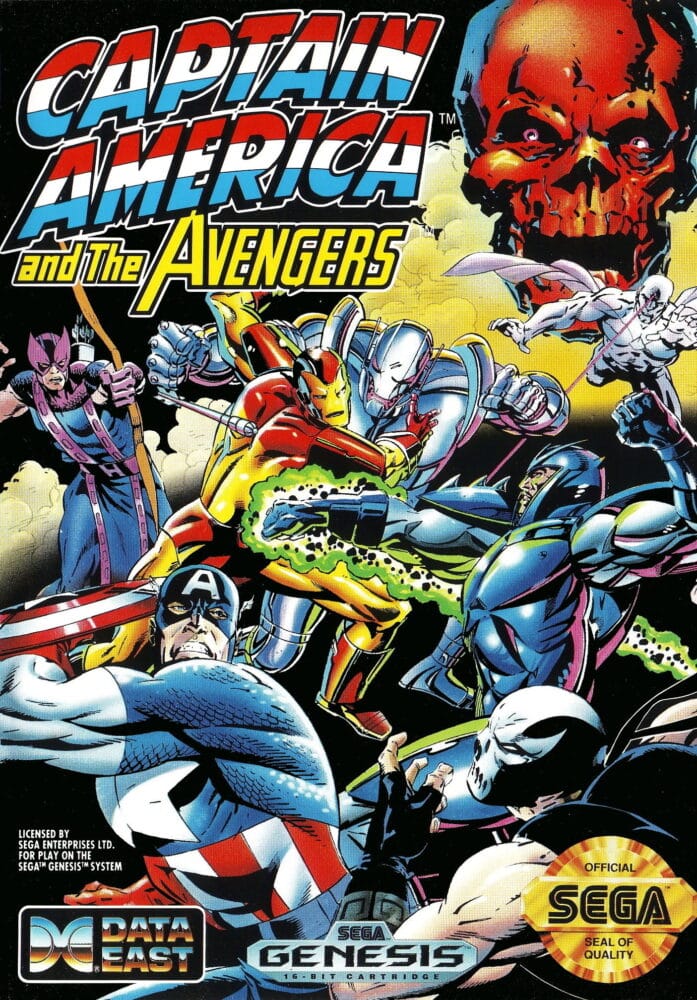
- Developer: Data East
- Release Year: 1992
Based on the arcade cabinet that ate way too many of your quarters, Captain America and the Avengers on Genesis is a faithful port that brings the superhero team brawler home. You can choose from Cap himself, Iron Man, Vision, or Hawkeye to punch, blast, and shield-sling your way through Red Skull’s army of robots and goons. The gameplay is classic, straightforward beat ‘em up action. Each hero feels distinct, with their own projectile attacks and melee combos. The ability to fly with Iron Man and Vision adds a fun verticality to the combat that many other brawlers lack. The Genesis version trims down some of the visual flair, but keeps the fast-paced gameplay and memorable voice samples.
Why It’s Worth Playing: Despite its technical shortcomings, Captain America and the Avengers captures the comic book feel of the Avengers perfectly, and there’s a simple, joyful nostalgia to teaming up and taking down the bad guys. It’s not the most complex or polished brawler on the system, but its heart is in the right place. For a dose of classic, cooperative superhero action, it still hits the spot.
Mighty Morphin Power Rangers
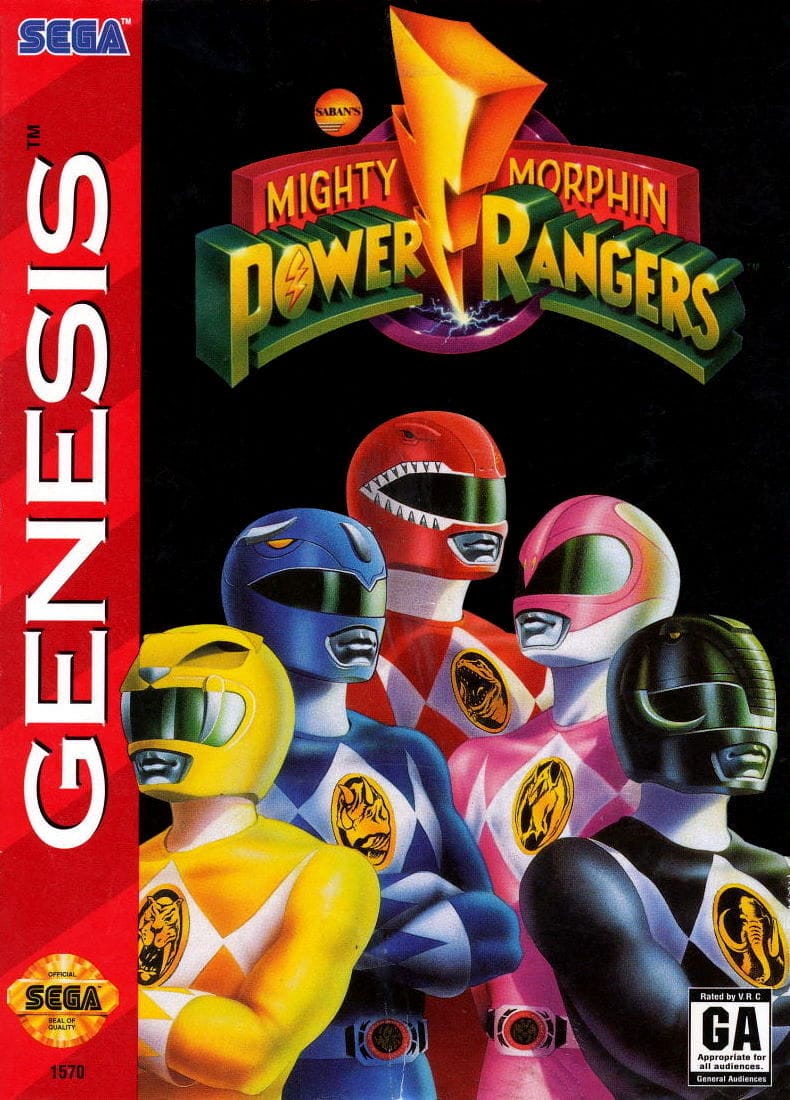
- Developer: Nova
- Release Year: 1994
Based on the global phenomenon that had every kid in the 90s practicing their karate chops, Mighty Morphin Power Rangers on Genesis is a far better game than it had any right to be. You can play as any of the five core Rangers, each with their own unique weapon and special move, as you battle Putty Patrollers and fight iconic villains like Goldar. The levels are ripped straight from the show, and the sprite work is fantastic for the time. But the real charm happens in two-player co-op, where you and a friend can finally live out your dream of being a Ranger team, coordinating your attacks and saving the world. It’s flashy, fast-paced, and pure ‘90s nostalgia in motion.
Why It’s Worth Playing: While the SNES version went full-on fighting game, the Genesis stuck to brawling—and nailed it. The combat is fun, the presentation is top-notch, and the co-op is an absolute joy. Whether you’re a longtime fan or just appreciate a well-made licensed game, this one is a megazord of fun. It’s time to morph into action!
Comix Zone
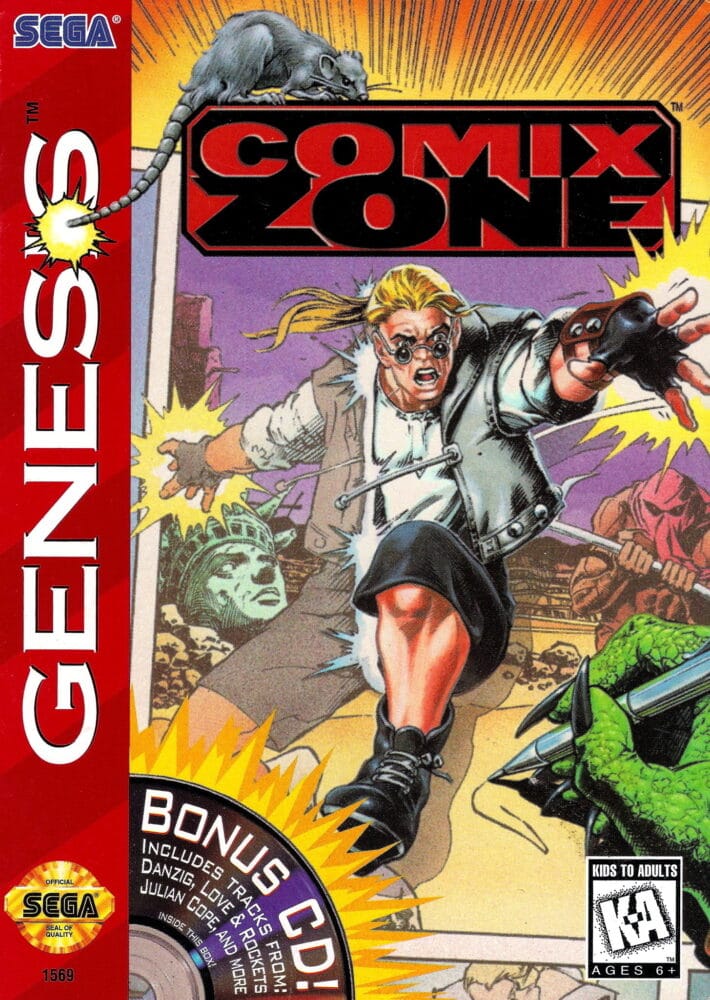
- Developer: Sega
- Release Year: 1995
Few Genesis games turned heads like Comix Zone. You play as Sketch Turner, a comic artist pulled into his own creation, fighting through animated panels and battling hand-drawn enemies. Every punch, every enemy, every environmental hazard is framed within hand-drawn comic panels, complete with speech bubbles, sound effects scrawled on the background, and even the option to “turn” the page to the next scene. The artistry is staggering, and the combat is surprisingly deep and punishingly difficult. You have to use your wits, your pet rat Roadkill, and items you tear out of the environment to survive. It’s a brutally short experience, but that’s because every encounter is designed to be a life-or-death struggle.
Why It’s Worth Playing: Comix Zone is one of the most stylish and original games on the system. While brutally difficult, the inventive presentation, killer soundtrack, and unique premise makes it a must-play for anyone who appreciates video games as an art form.
Cyborg Justice
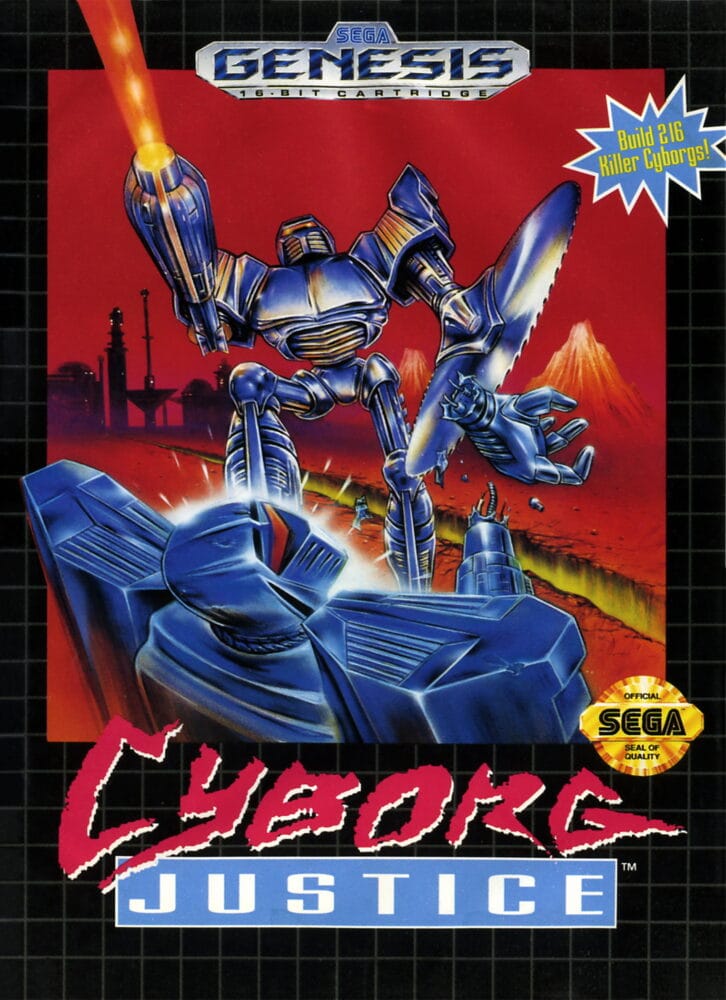
- Developer: Novotrade Software
- Release Year: 1993
Where do we even begin with Cyborg Justice? The premise is pure 90s sci-fi schlock: your cyborg body has been hijacked by a rogue AI, and you have to fight your way through its army of mechanical minions to get it back. But the hook—the glorious, ridiculous hook—is the combat. You don’t just punch enemies; you grapple with them, rip their limbs off, and then attach those very limbs to your own body. The gameplay is slower and more strategic than most beat ’em ups, but it rewards tactical players who love experimenting.
Why It’s Worth Playing: You will never play another beat 'em up like this. Cyborg Justice is a testament to the weird, experimental spirit of 16-bit gaming. No two matches feel the same thanks to the build-your-own-body system. For anyone tired of the same old punch-kick routine and craving something truly different, this is your holy grail. It’s a cult classic for a very, very good reason.
DJ Boy
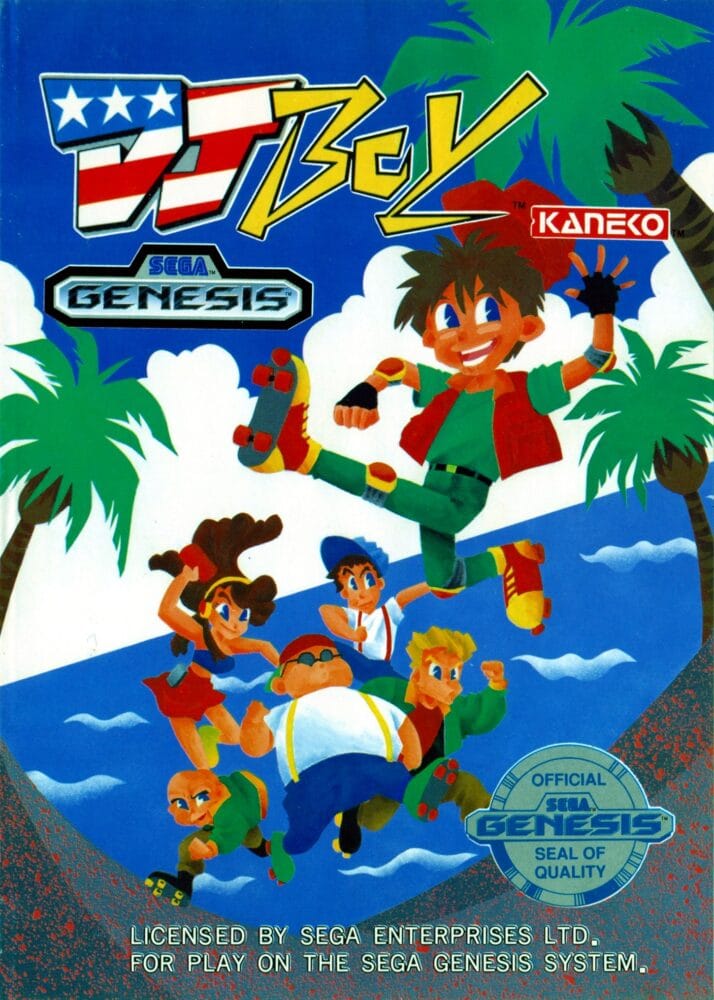
- Developer: Kaneko
- Release Year: 1993
DJ Boy is a prime slice of that early ’90s attitude, a time when everything was extreme, radical, and desperately trying to be cool. You play as, you guessed it, a rollerblading DJ who fights crime. Because why not? Armed with your trusty yo-yo (naturally), you skate through levels beating up a rogue’s gallery of punks and bikers. You can build up speed, perform jumps, and unleash special moves that drain your health—a classic trope. The graphics are bright and colorful, with some impressively large enemy sprites for such an early Genesis title. It’s not the most polished or deep brawler on the system, but it oozes so much charm and unironic commitment to its ridiculous theme that it’s hard not to smile while playing it.
Why It’s Worth Playing: DJ Boy is a time capsule of a very specific moment in gaming history. It’s not going to win any awards for best gameplay, but it’s a hilarious and oddly endearing relic. If you’re looking for a beat ‘em up that feels different from anything else on Genesis, DJ Boy delivers with pure retro flavor and off-the-wall energy. It’s a conversation starter and a genuinely fun, if flawed, curiosity.
Second Samurai
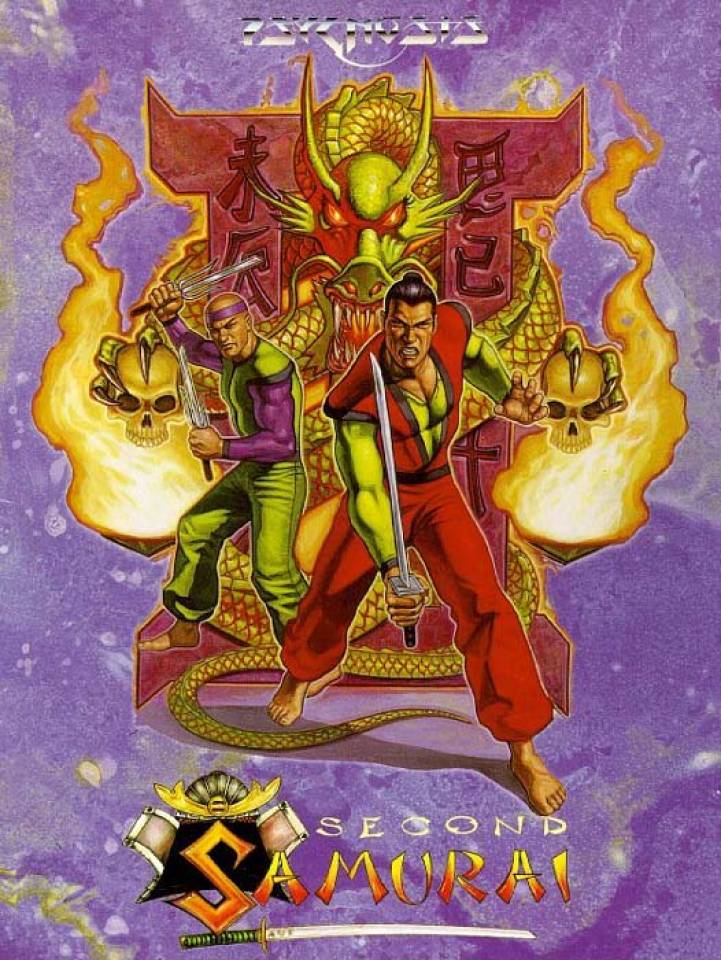
- Developer: Vivid Image
- Release Year: 1994
A late-gen entry that didn’t get the spotlight it deserved, Second Samurai mixes brawling with platforming and time-traveling madness. The gameplay is a fantastic mix of slashing melee combat and projectile shooting. You can switch between your sword and gun on the fly, which adds a layer of strategy to the encounters. The levels are sprawling and multi-directional, often requiring a bit of exploration rather than just mindlessly moving right. It’s challenging, with some tough boss fights, but it’s also incredibly satisfying. The soundtrack is an absolute banger, too, with some pulse-pounding techno tracks that perfectly complement the action.
Why It’s Worth Playing: Second Samurai is a hidden gem that offers a refreshing twist on the genre. The weapon-switching mechanic and exploratory level design give it a depth that many other brawlers lack. It’s a visually stylish, action-packed adventure with a killer soundtrack. If you’re looking for a Genesis beat ‘em up that isn’t just another Streets of Rage clone, this is the one to seek out.
Mazin Saga: Mutant Fighter
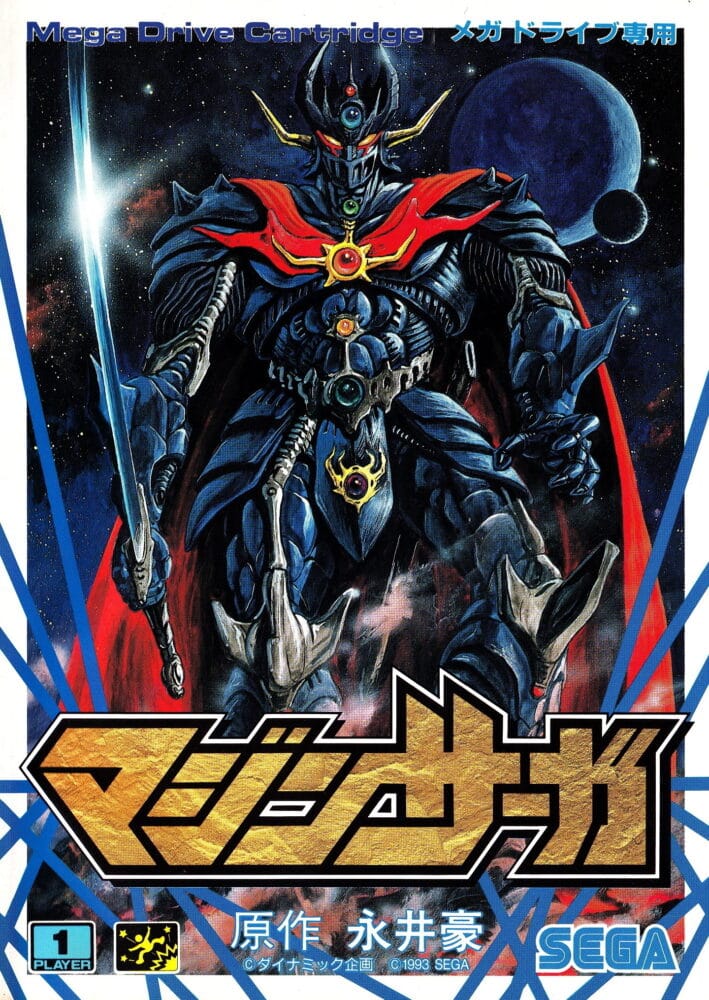
- Developer: Almanic
- Release Year: 1993
Mazin Saga: Mutant Fighter is one of those games that makes you stop and ask, “What did I just play?” in the best way possible. Based on the Mazinger Z manga, Mazin Saga blends standard beat ’em up gameplay with one-on-one kaiju-style boss fights. As Koji Kabuto in the Mazinger armor, you’ll punch through hordes of mutants before squaring off against screen-filling monsters in cinematic showdowns. The beat ‘em up sections are solid, with you using a powerful, extending fist to pummel enemies. The sprite work is fantastic, especially the huge, detailed bosses. The sheer spectacle of the boss fights and the novelty of the genre mash-up make it an unforgettable experience.
Why It’s Worth Playing: Mazin Saga is ambitious, stylish, and way cooler than it has any right to be. The shift from brawler to versus fighter is executed with such confidence and style that it’s impossible not to be impressed. The boss fights alone are worth the price of admission—epic in scale and dripping with anime flair. For anyone seeking a truly unique and challenging action game, Mazin Saga is an absolute must-play hidden gem.
Bishoujo Senshi Sailor Moon
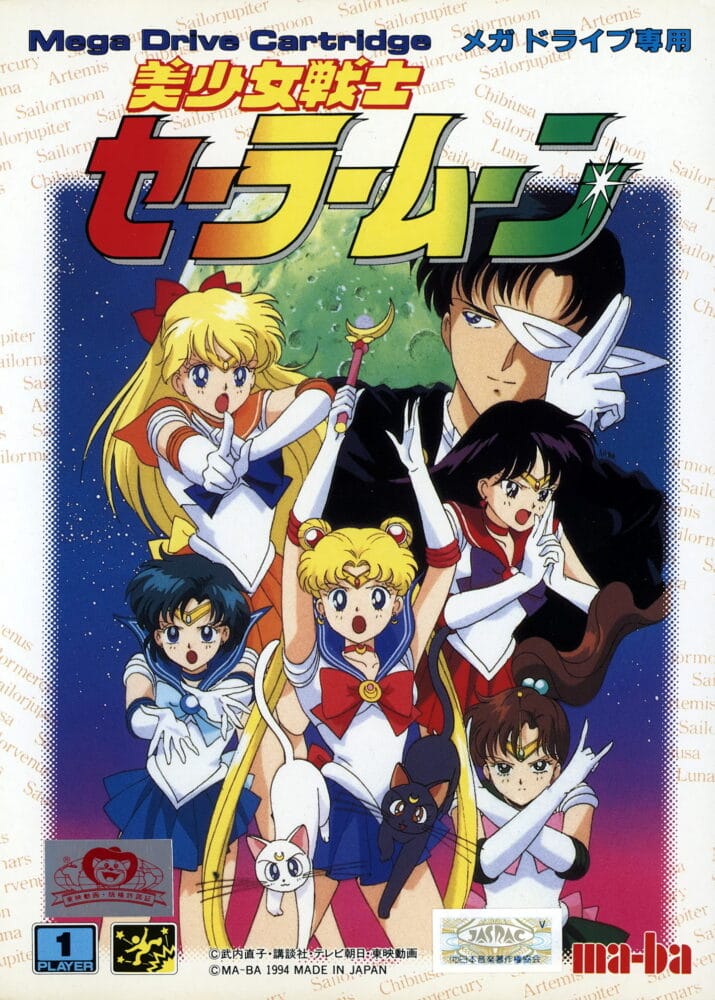
- Developers: Arc System Works, TNS
- Release Year: 1994
Released exclusively in Japan, Sailor Moon is more than just fan service—it’s a full-fledged brawler with charm and challenge. You can choose to play as Sailor Moon, Mercury, Mars, or Jupiter (with Venus unlockable) as you battle the forces of the Dark Kingdom across beautifully rendered stages. The first thing you’ll notice is the stunning sprite work. The characters are large, colorful, and animated with an incredible amount of detail and flair. Each Sailor Scout has her own unique attacks and combos, making them all feel distinct and fun to play. The gameplay is fast, fluid, and surprisingly deep for the genre. The two-player co-op is an absolute blast, perfectly capturing the team dynamic of the Sailor Scouts.
Why It’s Worth Playing: This is arguably the best Sailor Moon game ever made and a top-tier anime adaptation, period. It’s a visually gorgeous, incredibly polished brawler that stands on its own merits, even if you’ve never seen a single episode of the show. Accessible yet rewarding, this game is a must-play for anime fans and retro import hunters alike.
Batman: The Video Game

- Developer: Sunsoft
- Release Year: 1990
Based on Tim Burton’s 1989 film, Batman: The Video Game actually didn’t suck like other early Batman games. In fact, it’s still widely regarded as one of the greatest comic book adaptations ever made. You move with a weighty precision that makes you feel like Batman. Your punches have a satisfying thud, your Batarangs are a crucial tool, and your wall-jump ability adds a layer of verticality that most brawlers of the era completely ignored. The levels are dark, moody, and brilliantly designed, taking you from the streets of Gotham to the bell tower for that iconic showdown with The Joker. And the soundtrack? It’s an absolute masterpiece of moody, driving synth that perfectly sets the tone.
Why It’s Worth Playing: Batman set a new standard for what a licensed game—and an action game in general—could be on the Genesis. The tight controls, the incredible atmosphere, and the challenging gameplay have ensured its legacy lives on. You don't just play this game; you master it. It’s a short but satisfying romp through one of the better DC adaptations on Genesis—and one that still feels great to play today.
The Punisher

- Developer: Capcom
- Release Year: 1995
This port of Capcom’s arcade classic lets you play as Frank Castle as you tear through the criminal underworld, and The Punisher doesn’t shy away from his methods. While the violence was obviously toned down from the arcade version, the action is still satisfyingly brutal. You’re not just punching enemies; you’re smashing them with environmental objects, emptying entire clips of ammunition into them, and even taking hostages as human shields. The two-player co-op, where you’re joined by Nick Fury, is an absolute blast. The graphics are dark and gritty, with some impressively large and detailed sprites that bring the comic book violence to life.
Why It’s Worth Playing: The Punisher is one of the most mature and action-packed brawlers on the system. The weapon-based combat and environmental interactions give it a unique flavor that sets it apart from the competition. Whether you're blasting gangsters or pummeling bosses, The Punisher is pure, hard-hitting chaos—exactly what a vigilante beat 'em up should be.
Final Thoughts
Genesis beat ‘em ups hit hard with punchy controls, memorable sprites, and killer soundtracks. Whether you were slamming punks in Streets of Rage II or going full kaiju in Mazin Saga, these games knew how to deliver instant, satisfying action. The two-player co-op charm, pick-up-and-play ease, and diverse roster of characters made them timeless—and they still hold up better than many 3D-era successors.
Are you feeling the comic book mayhem of Comix Zone? Or maybe the brutal tag team of Battletoads: Double Dragon? No matter where you start, the Genesis beat ‘em up library is a goldmine of fists, kicks, and unforgettable ‘90s energy. Grab a controller—and a friend—and get ready to bring the pain, 16-bit style.







